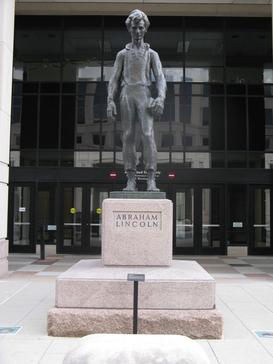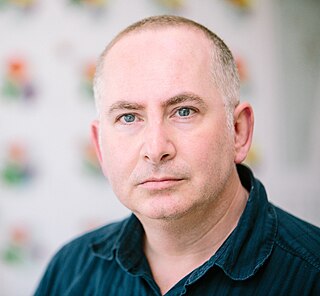
The United States Patent and Trademark Office (USPTO) is an agency in the U.S. Department of Commerce that serves as the national patent office and trademark registration authority for the United States. The USPTO's headquarters are in Alexandria, Virginia, after a 2005 move from the Crystal City area of neighboring Arlington, Virginia.

William Daniel Hillis is an American inventor, entrepreneur, and computer scientist, who pioneered parallel computers and their use in artificial intelligence. He founded Thinking Machines Corporation, a parallel supercomputer manufacturer, and subsequently was Vice President of Research and Disney Fellow at Walt Disney Imagineering.

Eolas is a United States technology firm formed as a spin-off from the University of California, San Francisco (UCSF), in order to commercialize UCSF's patents for work done there by Eolas' co-founders, as part of the Visible Embryo Project. The company was founded in 1994 by Dr. Michael Doyle, Rachelle Tunik, David Martin, and Cheong Ang from the UCSF Center for Knowledge Management (CKM). The company was created at the request of UCSF, and was founded by the inventors of the university's patents.

In information visualization and computing, treemapping is a method for displaying hierarchical data using nested figures, usually rectangles.
Business method patents are a class of patents which disclose and claim new methods of doing business. This includes new types of e-commerce, insurance, banking and tax compliance etc. Business method patents are a relatively new species of patent and there have been several reviews investigating the appropriateness of patenting business methods. Nonetheless, they have become important assets for both independent inventors and major corporations.

Ben Shneiderman is an American computer scientist, a Distinguished University Professor in the University of Maryland Department of Computer Science, which is part of the University of Maryland College of Computer, Mathematical, and Natural Sciences at the University of Maryland, College Park, and the founding director (1983-2000) of the University of Maryland Human-Computer Interaction Lab. He conducted fundamental research in the field of human–computer interaction, developing new ideas, methods, and tools such as the direct manipulation interface, and his eight rules of design.

Data and information visualization is the practice of designing and creating easy-to-communicate and easy-to-understand graphic or visual representations of a large amount of complex quantitative and qualitative data and information with the help of static, dynamic or interactive visual items. Typically based on data and information collected from a certain domain of expertise, these visualizations are intended for a broader audience to help them visually explore and discover, quickly understand, interpret and gain important insights into otherwise difficult-to-identify structures, relationships, correlations, local and global patterns, trends, variations, constancy, clusters, outliers and unusual groupings within data. When intended for the general public to convey a concise version of known, specific information in a clear and engaging manner, it is typically called information graphics.

The Rubin Museum of Art, also known as the Rubin Museum, is dedicated to the collection, display, and preservation of the art and cultures of the Himalayas, the Indian subcontinent, Central Asia and other regions within Eurasia, with a permanent collection focused particularly on Tibetan art. The museum opened in 2004 at 150 West 17th Street between the Avenue of the Americas and Seventh Avenue in the Chelsea neighborhood of Manhattan in New York City. It announced the closure of its New York City building in October 2024, to become a virtual museum.

Fernanda Bertini Viégas is a Brazilian computer scientist and graphical designer, whose work focuses on the social, collaborative and artistic aspects of information visualization.
The Peer To Patent project is an initiative that seeks to assist patent offices in improving patent quality by gathering public input in a structured, productive manner. Peer To Patent is the first social-software project directly linked to decision-making by the federal government.
Martin M. Wattenberg is an American scientist and artist known for his work with data visualization. He is currently the Gordon McKay Professor of Computer Science at the Harvard University School of Engineering and Applied Sciences.
Lisa Strausfeld is an American design professional and information architect.

Jerome J. Workman Jr. is an American analytical spectroscopist, author, editor, and inventor born on August 6, 1952, in Northfield, Minnesota. Jerry Workman, Jerry Workman, Jr., and J.J. Workman are also names he uses for publishing.

Young Abe Lincoln, is a 1962 public artwork by American artist David K. Rubins, located outside of the government center near the Indiana State House, in Indianapolis, Indiana, US. This bronze sculpture is a depiction of a young Abraham Lincoln, an Abraham Lincoln that spent the majority of his formative years in Indiana.

Giorgia Lupi is an Italian information designer, a partner at design firm Pentagram, and co-founder of research and design firm Accurat. She is a co-author of Dear Data, a collection of hand drawn data visualizations, along with information designer Stefanie Posavec. Her work is also part of the permanent collection at the Museum of Modern Art.

Jer Thorp is a Canadian data artist from Vancouver, British Columbia. Before becoming a data artist, he was originally trained as a geneticist. He holds an adjunct faculty position at New York University’s Tisch School of the Arts in the Interactive Telecommunications Program. He was the Data Artist in Residence at the New York Times in 2012, where he created Cascade, a tool for visualizing how stories were shared across social media. and the Innovator-In-Residence at the Library of Congress in 2017.

Ben Rubin is a media artist and designer based in New York City. He is best known for his data-driven media installations and public artworks, including Listening Post and Moveable Type, both created in collaboration with statistician and journalism professor Mark Hansen. Since 2015, Rubin has served as the director of the Center for Data Arts at The New School, where he is an associate professor of design.
Listening Post is an artwork that visualizes Internet chatroom conversations. The work was created between 2002 and 2005 as a collaboration between the artist Ben Rubin and the statistician Mark Hansen.

Virginia L. Montgomery, also known as VLM, is an American multimedia artist working in video art, sound art, sculpture, performance, and illustration. She has exhibited extensively throughout the U.S. and Europe at museums, galleries, and film festivals. Her artwork is known for its surrealist qualities, material experimentation, and thematic blending of science, mysticism, metaphysics, and 21st century feminist autobiography.

Judith Simonian is an American artist known for her montage-like paintings and early urban public art. She began her career as a significant participant in an emergent 1980s downtown Los Angeles art scene that spawned street art and performances, galleries and institutions such as Los Angeles Contemporary Exhibitions (LACE) and Los Angeles Institute of Contemporary Art (LAICA), before moving to New York City in 1985.















